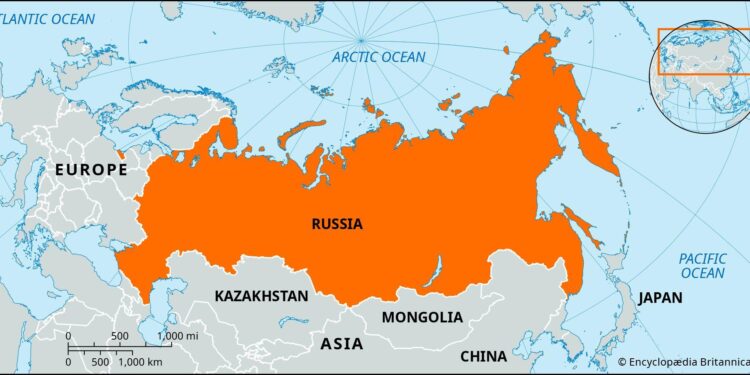As the conflict between Russia and Ukraine continues to unfold, the question of territorial control remains central to understanding the current landscape of the war. Recent reports indicate that Russia has maintained significant control over various regions of Ukraine since the onset of hostilities in 2014, with its military presence and territorial gains evolving over time. In this article, we will examine the extent of Russian territorial control in Ukraine, outlining key areas under occupation and the implications of this ongoing struggle for sovereignty. Through a detailed analysis of satellite imagery, military reports, and expert commentary, we aim to provide a comprehensive overview of the situation on the ground, shedding light on the geopolitical ramifications of this enduring conflict.
Assessing the Current Territorial Control in Ukraine Amid Ongoing Conflict
As the conflict in Ukraine reaches critical junctures, understanding the current territorial control is paramount. The frontline remains fluid, with several key regions experiencing intense military engagement. Currently, Russia maintains control over significant areas, including:
- Donetsk Oblast: Major urban centers like Donetsk and Mariupol are deeply entrenched in conflict.
- Luhansk Oblast: The majority of Luhansk is under Russian influence, with ongoing operations to secure additional territories.
- Crimea: Annexed in 2014, this region remains firmly in Russian hands, with substantial military presence.
Recent assessments show that the territorial gains fluctuate as Ukrainian forces mount counteroffensives. Areas such as Kherson and Zaporizhzhia are contested, with localized battles shaping the dynamics of control. To provide further clarity, the following table illustrates the latest estimates of territorial control across prominent regions:
| Region | Control Status | Estimated Area (sq km) |
|---|---|---|
| Donetsk | Partially Controlled by Russia | 26,516 |
| Luhansk | Under Russian Control | 26,332 |
| Crimea | Under Russian Control | 27,000 |
| Kherson | Contested | 28,460 |
| Zaporizhzhia | Contested | 27,100 |
Understanding the Implications of Russian Occupation on Regional Stability
The ongoing Russian occupation in Ukraine has significant implications for regional stability, impacting geopolitical alliances and the balance of power in Eastern Europe. With the annexation of Crimea and continued military presence in Eastern Ukraine, Russia demonstrates a willingness to assert its influence through territorial claims. This situation has led to a variety of responses from neighboring countries and international organizations, resulting in heightened tensions and a complex security environment.
Key outcomes of the Russian control over Ukrainian territories include:
- Increased military activity: The unilateral action by Russia has prompted neighboring countries to bolster their defense strategies and, in some cases, increase military budgets.
- Shift in alliances: Countries previously indifferent are now supporting Ukraine, leading to a reconfiguration of alliances within NATO and the EU.
- Humanitarian crisis: The occupation has caused significant displacement and suffering, raising urgent concerns about humanitarian assistance and the need for international intervention.
Understanding the territorial dynamics in Ukraine provides insight into these ramifications. The table below outlines the key areas under Russian control:
| Territory | Status | Area (sq km) |
|---|---|---|
| Crimea | Annexed | 27,000 |
| Luhansk Region | Partially occupied | 26,000 |
| Donetsk Region | Partially occupied | 26,500 |
Strategic Recommendations for International Response to the Evolving Situation
The international community must adopt a multi-faceted approach to address the escalating tensions and territorial disputes resulting from Russia’s actions in Ukraine. Diplomatic engagement should be prioritized to encourage dialogue between conflicting parties, while simultaneously applying pressure through sanctions targeting key sectors of the Russian economy. Such measures could include:
- Broadening existing sanctions to include more oligarchs and businesses
- Enhancing military support for Ukraine to bolster its defense capabilities
- Strengthening alliances within NATO to display unified resistance against aggression
In addition, humanitarian support is crucial to alleviate the suffering of displaced civilians. Countries should increase funding for relief organizations operating in and around Ukraine. The establishment of a dedicated international fund can streamline donations for humanitarian efforts and facilitate:
- The provision of shelter and medical care for affected populations
- Education programs for children impacted by the conflict
- Job training initiatives to support reintegration of displaced individuals into society
Concluding Remarks
In conclusion, the ongoing conflict in Ukraine has resulted in significant territorial changes, with Russia asserting control over substantial areas since the beginning of hostilities. The complexities of the situation on the ground, the shifting front lines, and the geopolitical implications underscore the fluid nature of this conflict. As both sides continue to engage in military actions and diplomatic maneuvers, the question of territory remains a critical focal point in understanding the broader dynamics at play. As reported by Reuters, monitoring these developments will be essential for grasping the evolving landscape of this conflict and its impact on regional stability and international relations.














